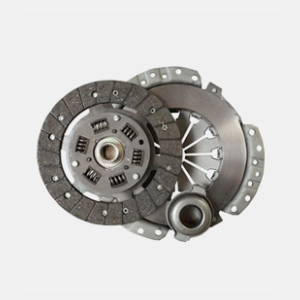-
 Afrikaans
Afrikaans -
 Albanian
Albanian -
 Amharic
Amharic -
 Arabic
Arabic -
 Armenian
Armenian -
 Azerbaijani
Azerbaijani -
 Basque
Basque -
 Belarusian
Belarusian -
 Bengali
Bengali -
 Bosnian
Bosnian -
 Bulgarian
Bulgarian -
 Catalan
Catalan -
 Cebuano
Cebuano -
 China
China -
 Corsican
Corsican -
 Croatian
Croatian -
 Czech
Czech -
 Danish
Danish -
 Dutch
Dutch -
 English
English -
 Esperanto
Esperanto -
 Estonian
Estonian -
 Finnish
Finnish -
 French
French -
 Frisian
Frisian -
 Galician
Galician -
 Georgian
Georgian -
 German
German -
 Greek
Greek -
 Gujarati
Gujarati -
 Haitian Creole
Haitian Creole -
 hausa
hausa -
 hawaiian
hawaiian -
 Hebrew
Hebrew -
 Hindi
Hindi -
 Miao
Miao -
 Hungarian
Hungarian -
 Icelandic
Icelandic -
 igbo
igbo -
 Indonesian
Indonesian -
 irish
irish -
 Italian
Italian -
 Japanese
Japanese -
 Javanese
Javanese -
 Kannada
Kannada -
 kazakh
kazakh -
 Khmer
Khmer -
 Rwandese
Rwandese -
 Korean
Korean -
 Kurdish
Kurdish -
 Kyrgyz
Kyrgyz -
 Lao
Lao -
 Latin
Latin -
 Latvian
Latvian -
 Lithuanian
Lithuanian -
 Luxembourgish
Luxembourgish -
 Macedonian
Macedonian -
 Malgashi
Malgashi -
 Malay
Malay -
 Malayalam
Malayalam -
 Maltese
Maltese -
 Maori
Maori -
 Marathi
Marathi -
 Mongolian
Mongolian -
 Myanmar
Myanmar -
 Nepali
Nepali -
 Norwegian
Norwegian -
 Norwegian
Norwegian -
 Occitan
Occitan -
 Pashto
Pashto -
 Persian
Persian -
 Polish
Polish -
 Portuguese
Portuguese -
 Punjabi
Punjabi -
 Romanian
Romanian -
 Russian
Russian -
 Samoan
Samoan -
 Scottish Gaelic
Scottish Gaelic -
 Serbian
Serbian -
 Sesotho
Sesotho -
 Shona
Shona -
 Sindhi
Sindhi -
 Sinhala
Sinhala -
 Slovak
Slovak -
 Slovenian
Slovenian -
 Somali
Somali -
 Spanish
Spanish -
 Sundanese
Sundanese -
 Swahili
Swahili -
 Swedish
Swedish -
 Tagalog
Tagalog -
 Tajik
Tajik -
 Tamil
Tamil -
 Tatar
Tatar -
 Telugu
Telugu -
 Thai
Thai -
 Turkish
Turkish -
 Turkmen
Turkmen -
 Ukrainian
Ukrainian -
 Urdu
Urdu -
 Uighur
Uighur -
 Uzbek
Uzbek -
 Vietnamese
Vietnamese -
 Welsh
Welsh -
 Bantu
Bantu -
 Yiddish
Yiddish -
 Yoruba
Yoruba -
 Zulu
Zulu
Versatile Usage of Fine Garden Mesh for Enhanced Plant Protection and Effective Pest Control Solutions
Understanding Fine Garden Mesh The Essential Tool for Gardeners
Gardening is an age-old practice that requires an understanding of plants, soil, weather, and pest management. One of the often-overlooked yet crucial tools that can significantly enhance the gardening experience is fine garden mesh. This innovative solution serves multiple purposes, making it an essential item in the toolkit of both novice and experienced gardeners alike.
Fine garden mesh, also known as mesh netting or horticultural mesh, is typically made from high-quality synthetic materials that are designed to withstand various environmental conditions. Its primary purpose is to protect plants from larger pests such as birds, rabbits, and insects. The mesh acts as a barrier, preventing these creatures from reaching the plants without obstructing the natural elements like sunlight and rain. This is particularly beneficial in maintaining a healthy garden, as it reduces the need for chemical pesticides and promotes organic gardening practices.
One of the significant advantages of using fine garden mesh is its versatility. It can be used in multiple contexts—whether you are growing vegetables, fruits, or ornamental plants. For instance, gardeners who cultivate crops such as strawberries or lettuce can use the mesh to cover their plants and prevent birds from eating the fruits or young leaves. Similarly, flower gardens can benefit from mesh coverings that keep rabbits and deer at bay, thereby ensuring that the blooms remain intact for longer periods.
fine garden mesh

Moreover, fine garden mesh is not just limited to pest control. It also plays a vital role in protecting plants from harsh weather elements. During the peak of summer, heat and strong sunlight can stress delicate plants. A fine mesh can provide a shade cover, reducing the intense sun exposure while still allowing air circulation. Conversely, in colder months, mesh can protect plants from frost damage when used appropriately. This adaptability makes fine garden mesh an invaluable asset throughout the gardening year.
Installation is another aspect where fine garden mesh shines. Unlike heavier materials that require complex structures to support them, fine garden mesh is lightweight and can be easily draped over existing structures, such as garden frames or trellises. It can also be secured directly on the ground with stakes or attached to other gardening structures. This ease of use means that even those who are new to gardening can effectively implement this protective measure with minimal fuss.
Furthermore, environmentally conscious gardeners will appreciate that fine garden mesh is often made from recyclable materials. Choosing sustainable gardening tools not only supports the environment but also fosters a more responsible approach to gardening. By using mesh instead of traditional methods of pest control, such as chemical repellents, gardeners can minimize their ecological footprint.
In summary, fine garden mesh is an essential tool for anyone looking to cultivate a thriving garden. Its ability to protect against pests and harsh weather while being easy to install and environmentally friendly makes it a preferred choice among gardeners. Whether you are aiming for a bountiful vegetable harvest or a stunning flower display, incorporating fine garden mesh into your gardening strategy can lead to healthier plants and a more enjoyable gardening experience. So the next time you plan your garden, consider the benefits of fine garden mesh—it may be just what you need to take your gardening efforts to the next level.
-
Shipping Plastic Bags for Every NeedNewsJul.24,2025
-
Safety Netting: Your Shield in ConstructionNewsJul.24,2025
-
Plastic Mesh Netting for Everyday UseNewsJul.24,2025
-
Nylon Netting for Every UseNewsJul.24,2025
-
Mesh Breeder Box for Fish TanksNewsJul.24,2025
-
Expanded Steel Mesh Offers Durable VersatilityNewsJul.24,2025











